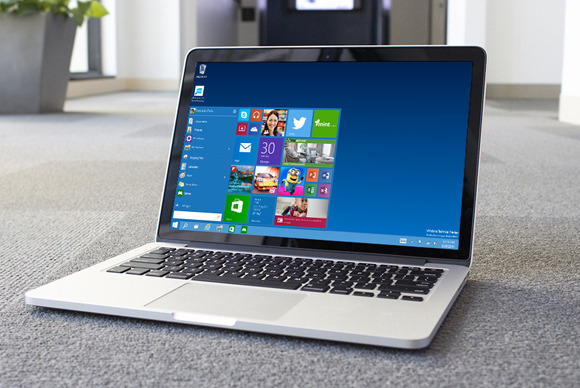Want to run Windows 10 on your MacBook? It's easier than you think.
Windows 10 is the best Windows yet. It runs beautifully on older hardware, it has a considerably smaller footprint on hard drives, and it has very low specs requirements, but why should PC users have all the fun?

Windows 10 Technical Preview has been spotted on a barrage of devices, including MacBooks. Speaking of Mac products, anyone curious about running Windows 10 on a MacBook, can accomplish the task in few simple steps.
One way some users have experimented with, is to use virtual machine software to run Windows 10 as an app, within Mac OS X. This method however may not be ideal, as resources would be shared with Mac OS X, with an observable performance reduction.
Installing Windows 10 natively, on the other hand, offers the ability to boot into Windows 10 directly, from a partitioned location on the hard drive, with the ability to make full use of hardware resources.
Boot Camp is a free utility that allows to partition the local hard drive, and initialize it to install other operating systems.
Requirements:
The minimum requirements for installing Windows 10 on a Mac are 2GB or RAM and 30GB of storage space, as well a 16GB thumb drive where to store a bootable copy of Windows 10.
It goes without saying that this is not a free upgrade, and it requires a full, brand new copy of Windows 10.
Full data backup
While Boot Camp is very reliable and stable, it’s always best to make a copy of all data on a separate drive for good measure, before partitioning the local drive.
Boot Camp and Windows 10
When opening Boot Camp, the app will display two checkboxes labeled: “Create a Windows 8 or later install disk” which is self explanatory, as it refers to the preparation of the installation medium from an original Windows 10 flash drive whose location will have to be specified when checking the box, and “Install Windows 8 or later version”, which will carry on the actual setup of Windows 10.
Once the installation medium is specified, we are ready to click on “Continue”. This will prompt for the choice of how much of the free space on the hard drive will be allocated to Windows 10.
Once an appropriate volume on disk is set, it’s time to click “Install” and let Boot Camp take over. The computer will restart several times over the course of the installation.
Once completed, the MAcBook or other Mac device on which Windows 10 has been installed, will prompt to load either OS X or Windows 10, at startup.
One issue, as reported by The Verge, was battery life. On a MacBook, using Windows 10 shortened the life of the battery quite a bit, considerably less than the 10 hours battery life usually seen on a MacBook running Mac OS X.
While running Windows 10 on a MacBook can be an interesting experiment, it should be noted that being that a product optimized for PCs, Windows 10 is best suited for laptop PCs.